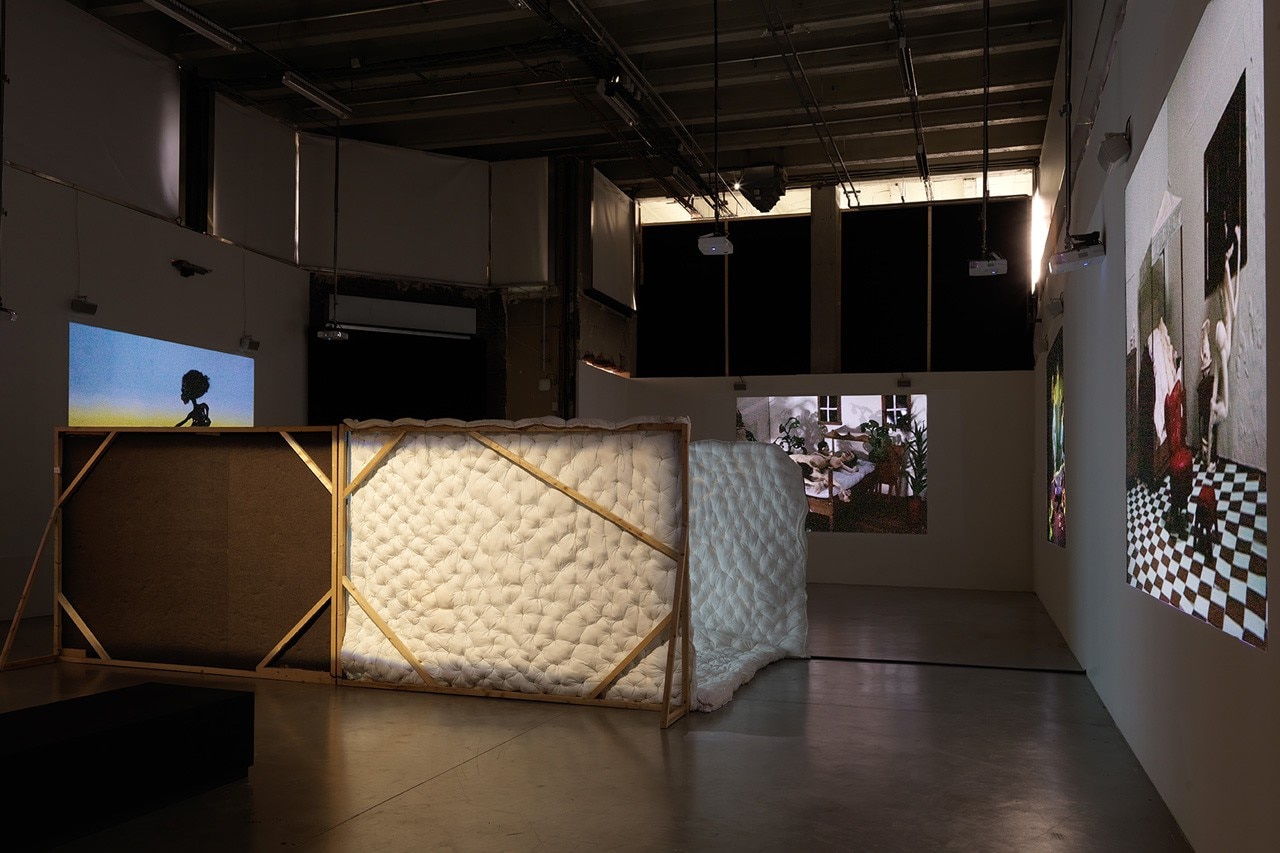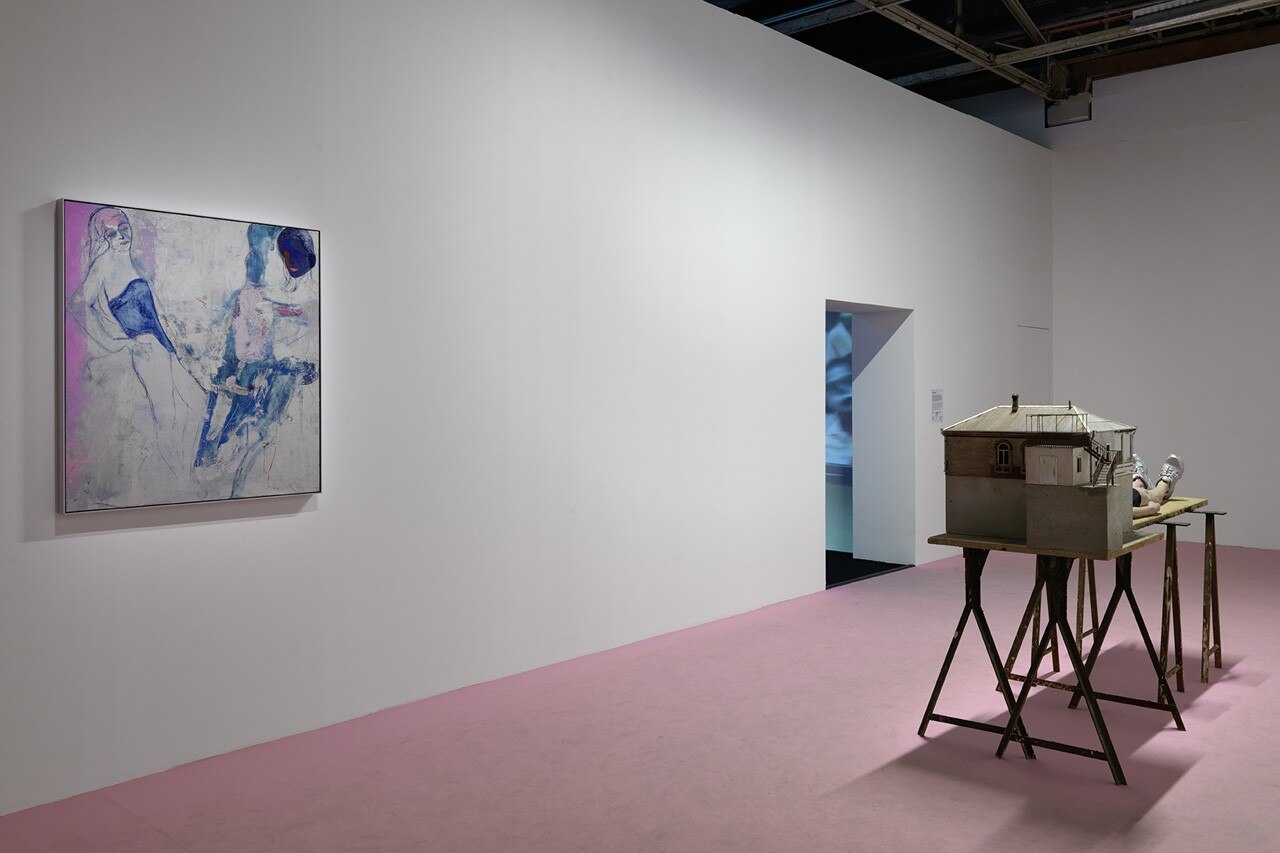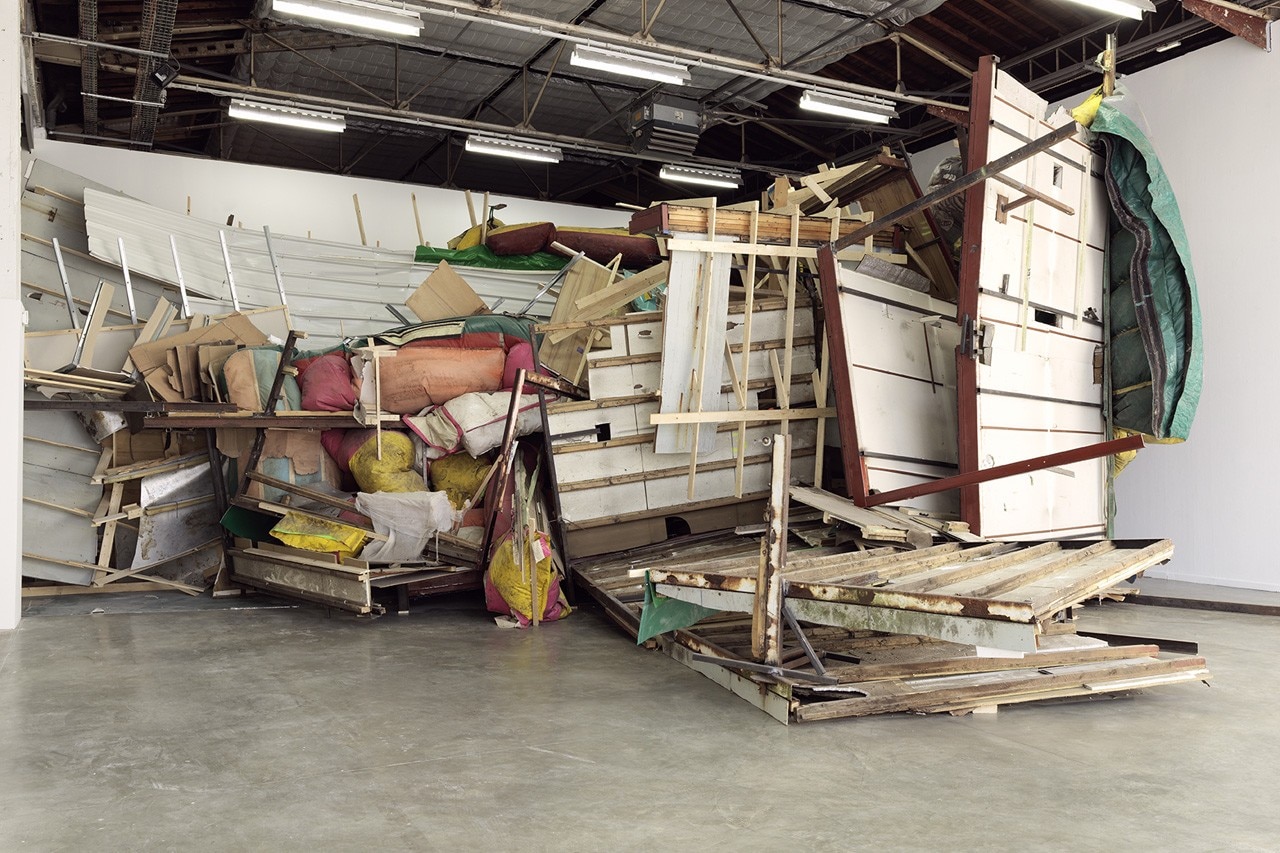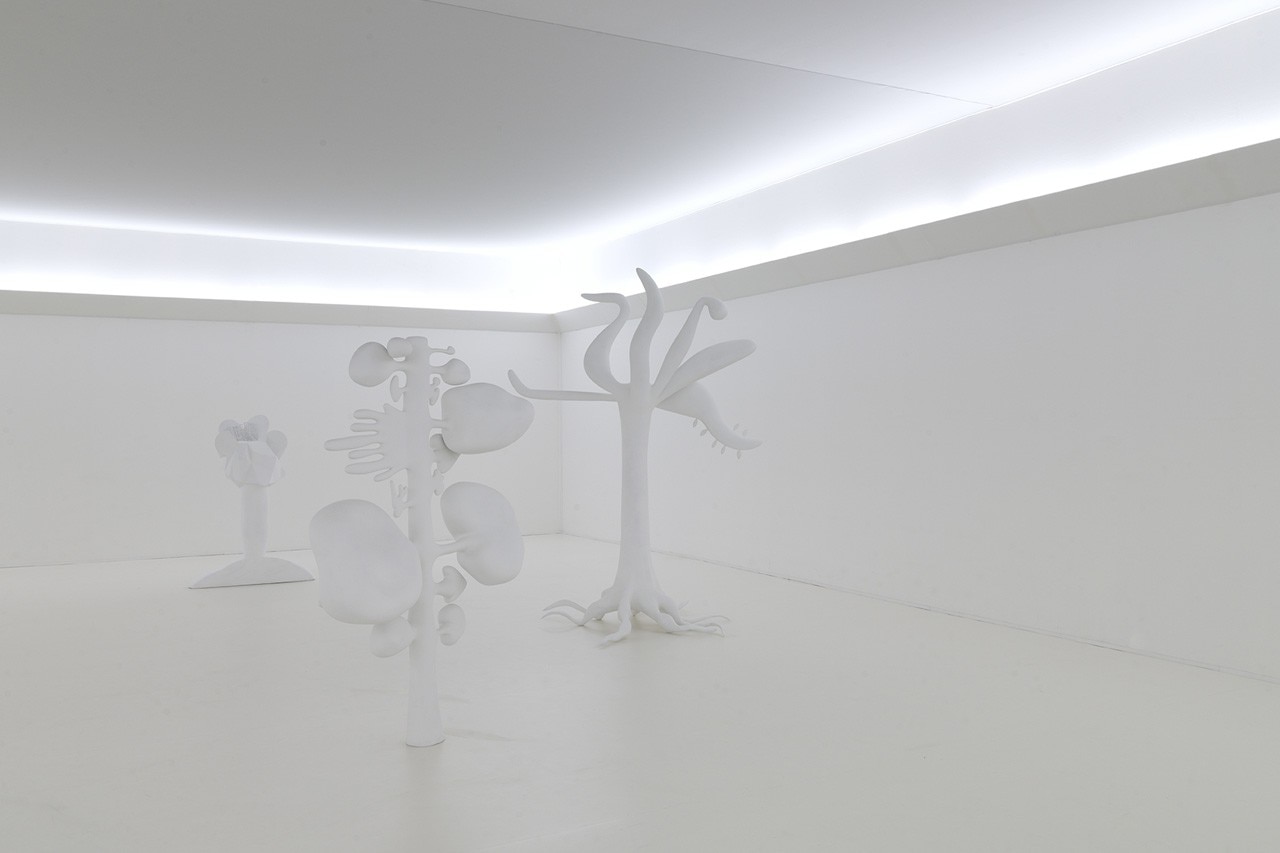
The list comprises established names such as Christian Boltansky, Bruce Nauman, Ion Grigorescu and Alberola and is dotted with the requisite parade of mainstream art, names repeated in all curatorial compilations worth their mustard and that perform as excellent session players, back-ups to the realisation of the concept of “Inside”: artists on familiar paths, such as Ryan Gander and Mark Manders passing via Peter Buggenhot and Dove Allouche, along with what are a few Palais “déjà vues”.
The programme then opens up to fashionable geography with a renewed focus on the art of what was formerly Eastern Europe and of today’s Russia: Valia Festov, Andra Ursuta and Ando Wekua, albeit en route from diasporas in New York and Berlin, are bunched with Mike Nelson and Nathalie Djurberg & Hans Berg to create the essential glue of site-specific accomplishments likely to hold water.
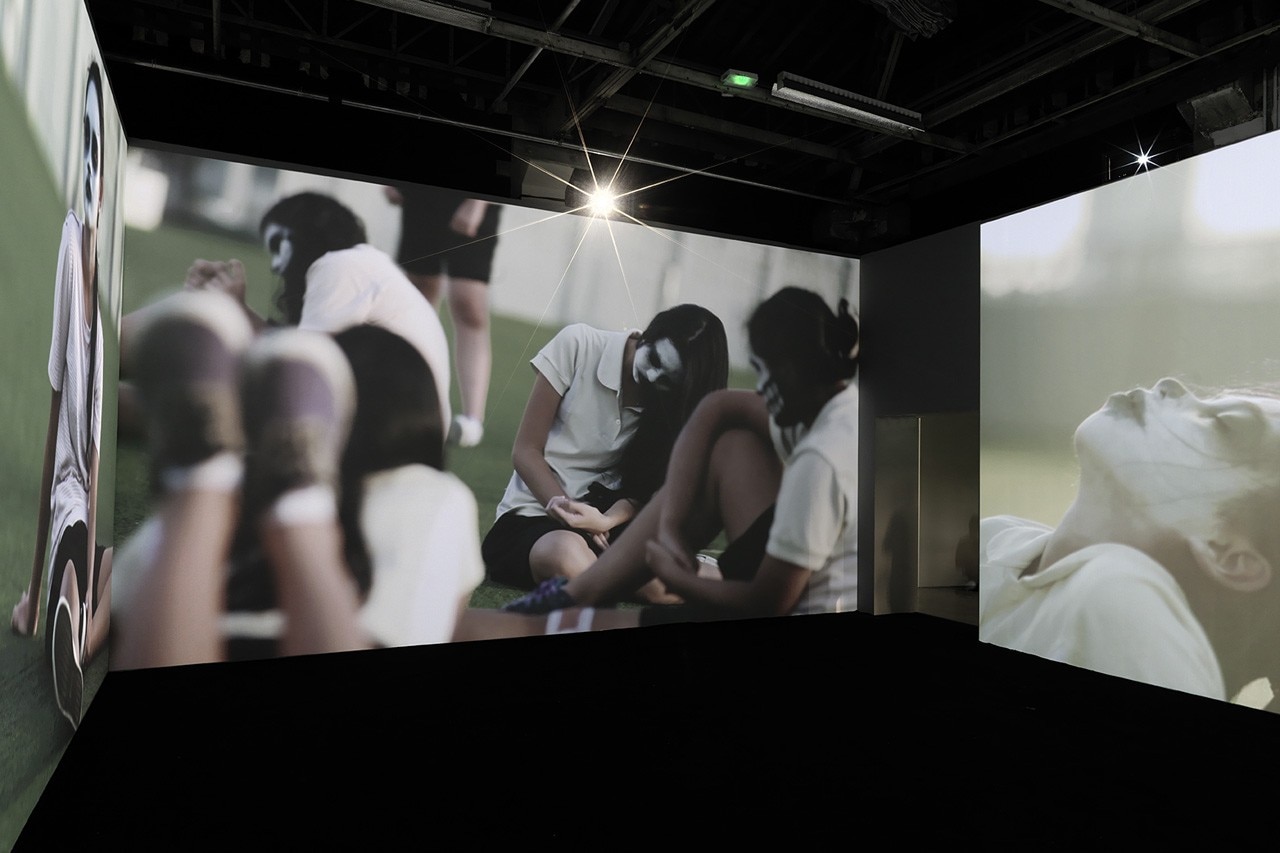
The children’s temporary play dens reproduced by Ryan Gander in white marble are the transference of high art, just as Peter Buggenhot’s heaps of funfair detritus, caravans and bouncy castles unconsciously echo the collision between art and amusement. The parody of the tsunami that has invested the contextual play of art in recent decades is residual to the process of these works and there really is no way out of this tornado of horror, desire, pleasure and unease.
Berdaguer & Pejus’ white trees seem to be islands of purity but are the product of psychological tests to determine the origin of traumas and pathologies. They epitomise inner nature and a therapeutic process based on form.
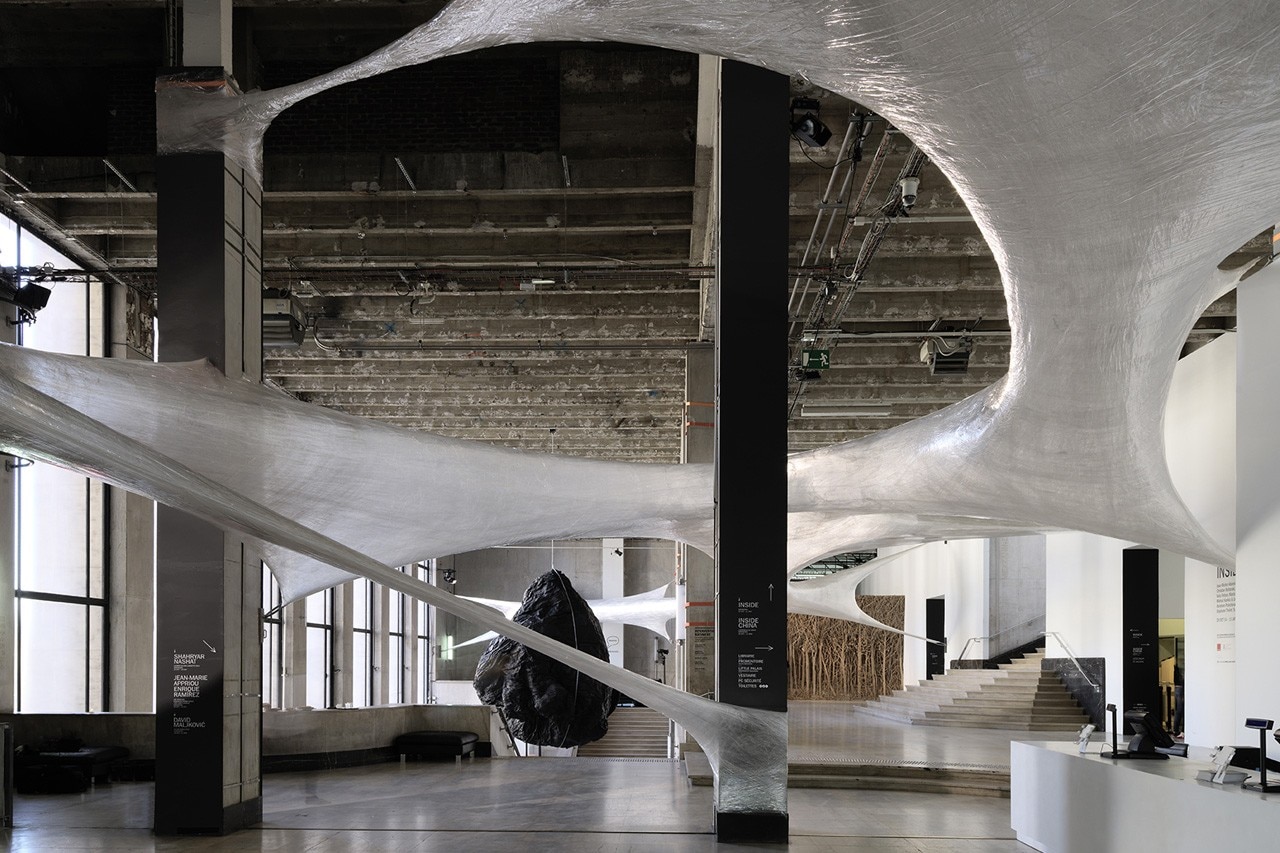
It is hard to believe that even beautiful operations such as Numen/For Use’s large enveloping spatial structures and Marcius Galan’s penetration of mirrors are not simply a forced play on dematerialisation. The space that opens up before the eyes suggests an even more adventurous immersion in the Palais; we are actually more in tune with the architecture than the perceptive challenge.
Nauman’s invitation to Get out of this room is wonderful, a historic work that in its purity clashes with the mechanism of attraction and repulsion at play in other works such as Stephane Thidet’s real wooden cabin, inside which it is pouring with rain, but only inside. On the outside, we are safe – in a game of heads or tails in which every work seems to conceal an abyss which we must obsessively face up to, either via physical experience or the imagination.
Nauman’s invitation to Get out of this room is wonderful, a historic work that in its purity clashes with the mechanism of attraction and repulsion at play in other works such as Stephane Thidet’s real wooden cabin, inside which it is pouring with rain, but only inside.
On the outside, we are safe – in a game of heads or tails in which every work seems to conceal an abyss which we must obsessively face up to, either via physical experience or the imagination.
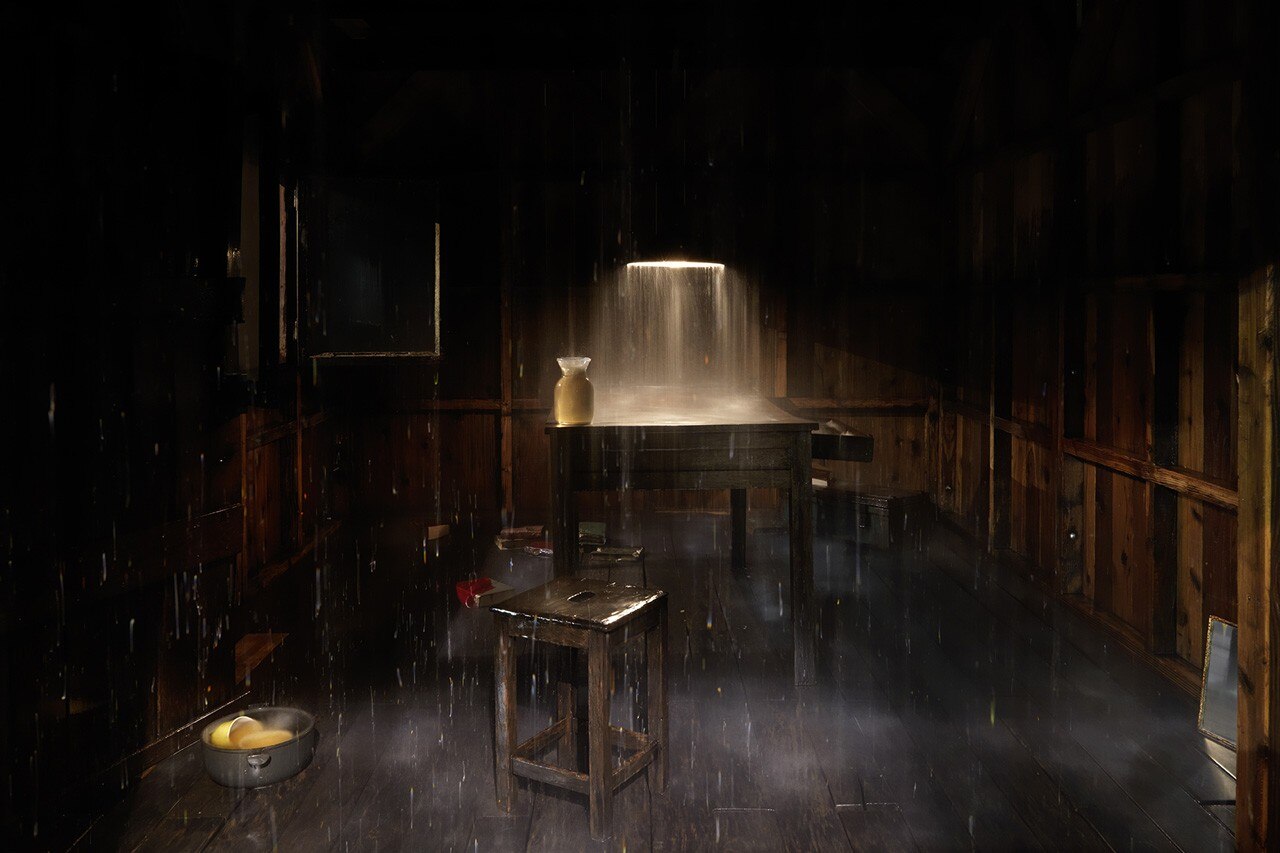
Valia Fetisov’s unusual work is an experience installation; after crossing the threshold of a room, we are trapped by an automatic door that shuts behind us leaving us to face the void with just a monitor and a chair for company. Finding a way out is not easy and who would believe that only absolute immobility sets us free from this claustrophobic condition? Panic rooms, filled with immobile figures and where not even metamorphosis or the comical and brutal animalism of the human body in a Djurberg & Berg animation film can comfort the human us.
A cat-and-mouse destiny is suggested by Artur Zmijewski’s Berek video, filmed in a cellar and a death-camp gas chamber where everyone seems to have lost grip of the situation.
What is the best medium to address such sensitive subjects or to perceive the challenges hidden in the taboo areas of the unconscious? What constructions and what narratives do we have at our disposal?
Only prayer, probably, as in Araya Rasdjarmmrearnsook’s silent rituals as she watches over unclaimed dead bodies in the Chiang Mai morgue. This whole sense of unease seems truly to be seeking new structures, not satisfied with the abundant repertoire of avant-garde art, Modernist architecture and science-fiction imagery, as suggested by Andro Wekua.
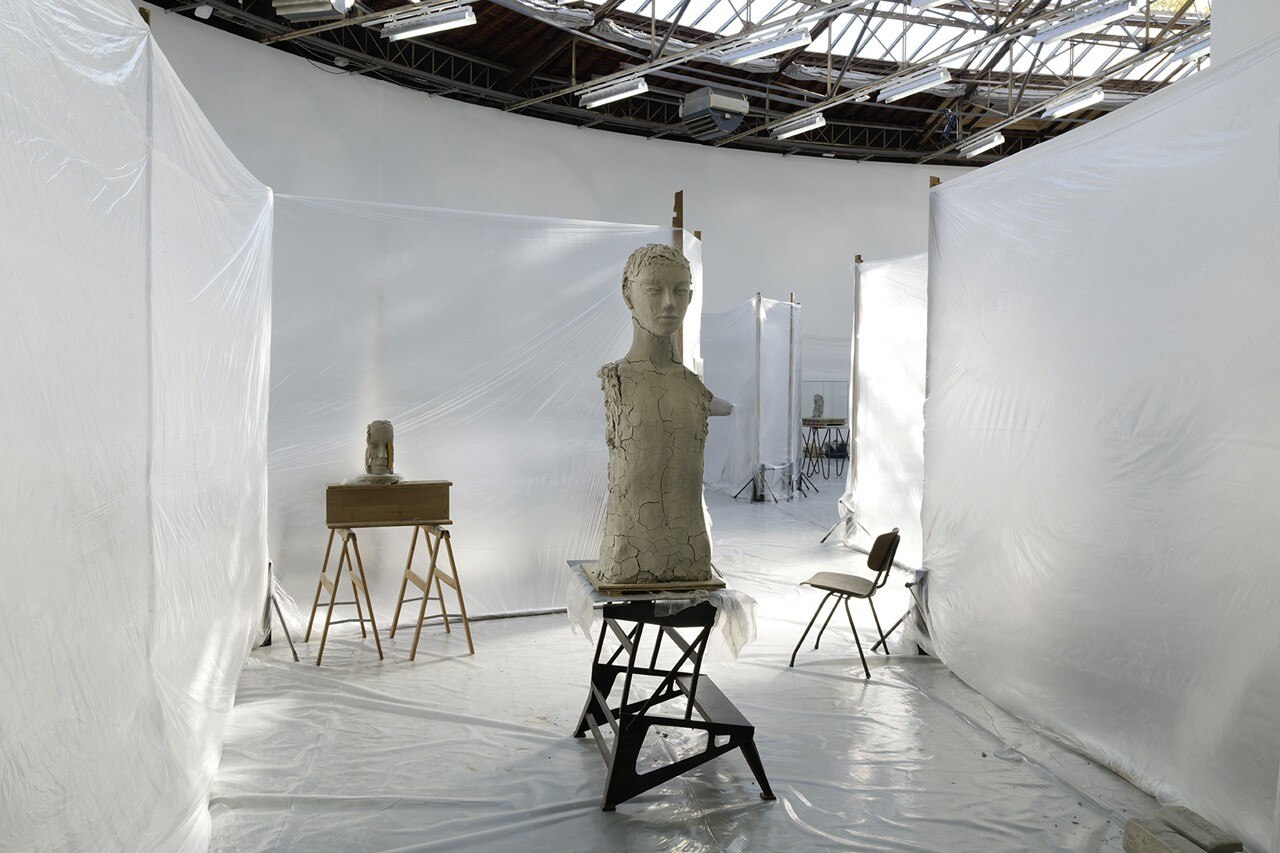
Film, again, but this time plummeting into the nonsense of the unreal experience innate to the cinematographic device as in the case of Jesper Just with the still convincing This Nameless Spectacle (2011), a long journey of seduction and distance between two people, a game of voyeurism played between the sensual gaze of a woman in a wheelchair and an urban stalker, in spaces that should be natural but are poisoned by sentimental tension.
Whether it is the underlying violence or the traumatic crisis situations, all the material exhibited seems based more on philosophical response than consistent aesthetic research.
